In this ancient meditation, the breath rhythm and mudra are linked to the mantra. It is said that this meditation allows you to control the senses and thoughts, and to balance prana and apana so that your health is improved, the lung capacity is increased, and the nervous system has more vitality. It may also help optimize the body’s equilibrium between the exchange of carbon dioxide and oxygen, and stimulate the thyroid and parathyroid glands.
Whistle Breath
Posture: Sit in Easy Pose.
Breath: Inhale with a deep whistle through the mouth. The lips should be puckered like a beak. Exhale through the nose. Concentrate the sound at the Brow Point.Just listen to the pure sound.
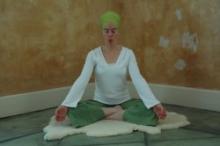
Continue for 5 minutes. Then begin mentally inhaling Sat and exhaling Nam with the whistle for 2 more minutes.
Cobra Pose
Posture: Come into Cobra Pose. Ideally your feet are together, arms are straight, and the hips are on the ground. From the hips to the head your spine creates a smooth ‘C’ curve. The shoulder blades move down the back, supporting and opening the chest and neck, and then your eyes focus at a point on the ceiling.
However, this is an advanced posture and you can modify it as follows to protect your neck and lower back. Lie on the stomach with your palms flat on the floor under the shoulders, fingers spread wide. Apply Root Lock, rotate the pelvis so the tailbone turns towards the ground, and elongate out of the lower back, shoulder blades drawing down.
Use the inhale to expand the ribcage and begin to arch the chest upward as you slowly straighten your arms, straightening only as much as you can without feeling compression in the lower back, and continuing to open the chest and stretch into the upper back. If this means that you only come to your forearms, or your arms are bent, that is fine. Resist the temptation to bend where you are already flexible. Once the chest is open, with the shoulder blades supporting the chest this gives the head permission to go back and focus at a point on the ceiling.
Breath: Inhale through the nose and whistle out through the mouth
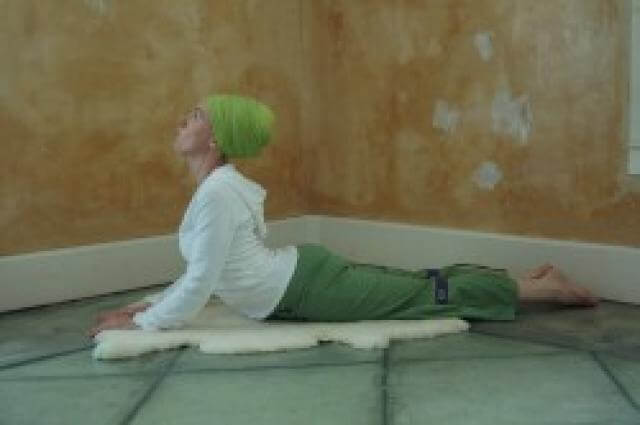
Continue for 3 to 5 minutes. Inhale and slowly relax down out of Cobra Pose. Rest for 2 minutes.
Knees to Chest
Posture & Sound: Lie on the back with the knees pulled to the chest. Hold them there with hands and fingers interlaced over the knees. Lift the head up, putting the nose between the knees. With the mouth closed, create the sound “hunnnnh” from the Navel Point. The vibrations will be felt in the nose and throat.
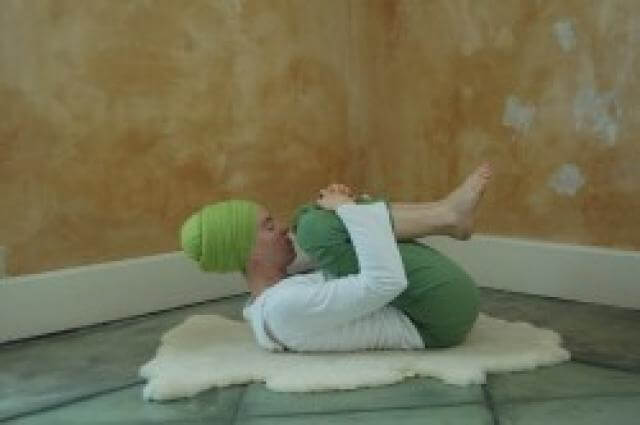
Continue for 3 minutes.
On Back with Legs Crossed
Posture: Relax on the back with legs crossed on the ground as in Easy Pose. This creates a delicate pressure in the lower spine. If you feel this creates too much pressure in the lower back, cross the legs loosely. Try to get as much of the spine on the ground as you can, keeping the shoulders relaxed, chin to collar bone. If your hips are tight, use pillows under the knees.
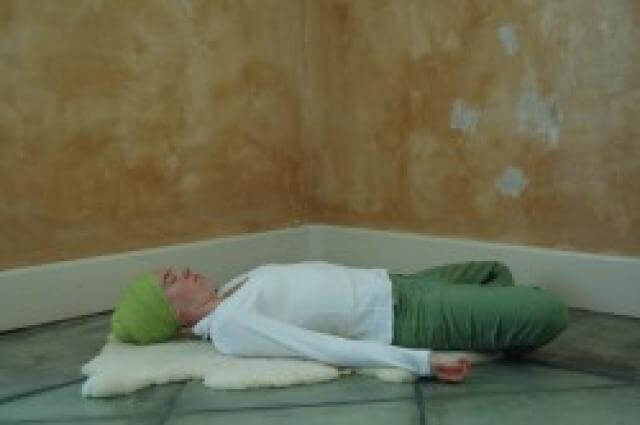
Maintain the position for 5 minutes. If needed, you can start with 3 minutes and build up to 5 minutes over time.
Spine Twist
Posture: Sit in Easy Pose, hands on the shoulders, thumbs behind and fingers in front.
Movement & Breath: Twist the torso from left to right, inhaling to the left and exhaling to the right. Synchronize the motion with the breath.
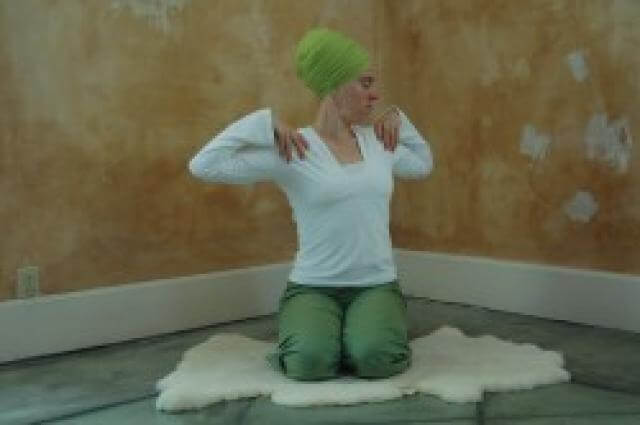
Continue for 1 minute. Then sit on the heels and continue the exercise for 1 more minute. Then inhale, hold briefly, exhale, and relax.
Baby Pose
Posture: Still sitting on the heels, lean forward and put the forehead on the ground. Rest completely in this pose.
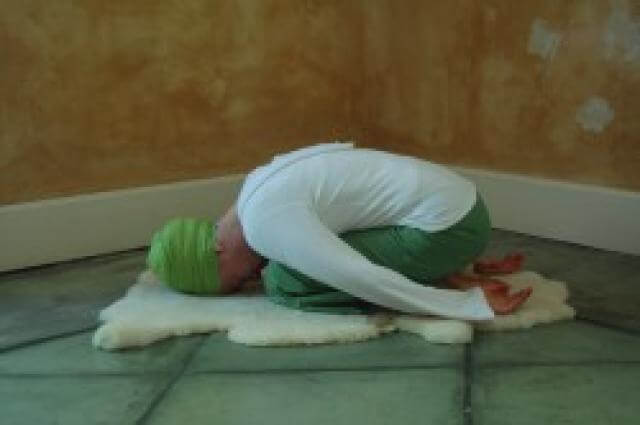
Continue for 3 to 5 minutes.
Comments:
You can practice the first exercise for up to 31 minutes, but it is a good idea to build up the time slowly over a period of weeks. After 15 minutes, you may experience some discomfort in your ears. After 31 minutes, you may experience some discomfort in your upper chest. As long as the discomfort does not become too intense, these are typically signs of the glands secreting and finding a new balance. Nevertheless, it is important to follow your own body’s signals and not push beyond your capacity.
This kriya can be found in Sadhana Guidelines.